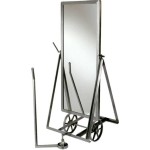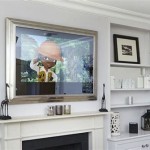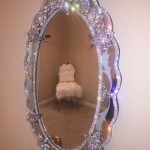How To Screen Mirror Your iPhone to a Windows Laptop
Screen mirroring, also known as screen casting, is the process of wirelessly transmitting the display of one device to another. This capability is particularly useful for presentations, sharing photos and videos with a larger audience, or simply enjoying mobile games on a bigger screen. For iPhone users, mirroring their screen to a Windows laptop provides a convenient way to leverage the processing power and display of their computers for various applications. Several methods and tools enable this functionality, each with its own set of advantages and potential limitations. This article will explore various effective techniques for screen mirroring an iPhone to a Windows laptop.
Understanding the Requirements and Limitations
Before attempting to mirror an iPhone screen to a Windows laptop, it's important to acknowledge certain prerequisites. First, both the iPhone and the Windows laptop must be connected to the same Wi-Fi network. This is generally a requirement for most wireless screen mirroring solutions. Second, the performance of the mirroring may be affected by the strength and stability of the Wi-Fi network. A strong and stable connection is crucial to ensure a smooth and lag-free experience. Third, the specific software or applications used for mirroring may have minimum system requirements for both the iPhone (iOS version) and the Windows laptop (operating system version). It is always best practice to verify that both devices meet these minimum requirements.
There are also potential limitations to consider. Some screen mirroring solutions may introduce latency, or delay, between the iPhone display and the laptop screen. This latency can be noticeable, especially during fast-paced activities such as gaming. Furthermore, some apps or content may be subject to digital rights management (DRM) restrictions, which can prevent them from being mirrored. These restrictions are often imposed by streaming services to prevent piracy and unauthorized distribution of copyrighted material.
Using Third-party Screen Mirroring Applications
Several third-party applications are designed specifically for screen mirroring between iOS devices and Windows computers. These applications often provide a more feature-rich experience compared to built-in options, including advanced settings, screen recording capabilities, and support for multiple devices. Some popular options in this category include AirServer, Reflector, and LetsView. Each of these applications offers a slightly different set of features and pricing models, so it’s beneficial to evaluate multiple options before settling on a particular choice.
The general setup process for these applications typically involves the following steps: First, download and install the chosen screen mirroring application on the Windows laptop. Second, ensure that both the iPhone and the laptop are connected to the same Wi-Fi network. Third, launch the mirroring application on the laptop and follow the on-screen instructions to enable screen mirroring on the iPhone. This often involves accessing the Control Center on the iPhone, selecting the "Screen Mirroring" option, and choosing the laptop from the list of available devices. Fourth, depending on the application, some configuration setting such as video quality, resolution, or audio output may be adjusted.
AirServer stands out as a versatile option, supporting not only screen mirroring from iOS devices but also from other platforms such as Android and Chrome OS. Reflector focuses on ease of use and offers features such as device mirroring and screen recording. LetsView is a free screen mirroring tool that supports both iOS and Android devices, making it an accessible choice for basic screen mirroring needs.
Leveraging AirPlay Receivers for Windows
AirPlay is Apple's proprietary wireless streaming protocol, designed for seamless integration between Apple devices. While Windows does not natively support AirPlay, there are AirPlay receiver applications available that enable Windows laptops to receive AirPlay streams from iPhones. These applications essentially emulate an Apple TV on the Windows machine, allowing the iPhone to recognize the laptop as an AirPlay destination.
To use an AirPlay receiver for Windows, first download and install a compatible application, such as LonelyScreen or AirMyPC. Second, ensure that both the iPhone and the Windows laptop are connected to the same Wi-Fi network. Third, launch the AirPlay receiver application on the laptop. Fourth, on the iPhone, open the Control Center, tap the "Screen Mirroring" option, and select the name of the AirPlay receiver from the list. The iPhone screen should then appear on the Windows laptop.
Airplay receivers can offer a relatively simple and straightforward method for screen mirroring, though some users have reported experiencing compatibility issues or occasional performance glitches. However, the convenience of utilizing the native AirPlay functionality on the iPhone makes this a worthwhile option to explore.
USB Connection for Reliable Mirroring
While wireless screen mirroring offers convenience, it can sometimes be susceptible to network congestion or intermittent connection issues. For a more stable and reliable connection, mirroring the iPhone screen via a USB cable presents a more robust alternative. This method bypasses the need for a Wi-Fi network and can provide a smoother, lower-latency mirroring experience.
To mirror an iPhone screen to a Windows laptop via USB, a third-party application like iTools, ApowerMirror, or AnyTrans is required. These applications act as intermediaries, facilitating the connection and screen mirroring process. First, download and install the chosen mirroring application on the Windows laptop. Second, connect the iPhone to the laptop using a USB cable. Third, launch the mirroring application on the laptop and follow the on-screen instructions to establish a connection with the iPhone. This might involve trusting the computer on the iPhone and enabling USB debugging (if prompted). Once the connection is established, the iPhone screen should be displayed on the laptop.
USB screen mirroring is particularly beneficial for activities that require low latency and stable performance, such as gaming or interactive presentations. It also avoids any potential privacy concerns associated with transmitting data over a wireless network. The main drawback is the need for a physical USB connection, which can limit mobility.
Troubleshooting Common Issues
Several common issues may arise when attempting to screen mirror an iPhone to a Windows laptop. One potential problem is the inability to detect the laptop on the iPhone's screen mirroring list. This issue can often be resolved by ensuring that both devices are connected to the same Wi-Fi network and that the screen mirroring application or AirPlay receiver is properly installed and running on the laptop. Firewall settings on the Windows laptop may also be blocking the connection, requiring adjustments to allow communication between the devices.
Another issue is experiencing lag or poor performance during screen mirroring. This is often caused by a weak Wi-Fi signal or network congestion. Try moving the devices closer to the Wi-Fi router or switching to a less congested network. Closing unnecessary applications running on both the iPhone and the laptop can also help improve performance.
If the screen mirroring is not working at all, try restarting both the iPhone and the Windows laptop. Reinstalling the screen mirroring application or AirPlay receiver can also resolve underlying software issues. Check for updates to the iOS operating system and Windows operating system, as well as updates for the screen mirroring application, to ensure compatibility and address any known bugs.
Finally, some applications or content may be restricted from being mirrored due to DRM. If this occurs, there is generally no workaround, as these restrictions are deliberately implemented by the content providers. It is also important to ensure that the display settings on both the iPhone and the Windows laptop are appropriately configured. Adjusting the resolution or scaling settings may improve the visual quality of the mirrored display.
By understanding the various methods and potential troubleshooting steps, users can effectively screen mirror their iPhone to a Windows laptop, enabling a wide range of possibilities for sharing, productivity, and entertainment. Careful consideration should be given to the specific needs and preferences of the user when selecting the most appropriate screen mirroring solution.

How To Mirror Iphone Windows Pc Laptop Mac Full Guide

How To Mirror Iphone Windows 10

How To Mirror Your Iphone Screen On A Computer Pcmag

How To Screen Mirror Your Iphone A Windows Pc

How To Mirror Iphone Windows Pc Laptop Mac Full Guide

Best Ways To Mirror Iphone Pc Via Usb Without Wifi

Tutorial How To Screen Mirror Iphone Laptop Windows 11

5 Minutes Screen Mirroring Iphone Ipad To Pc In 2024

How To Mirror Iphone Pc Without Ing Any

Iphone How To Mirror Your Screen On A Computer Without An Emulator The Economic Times








